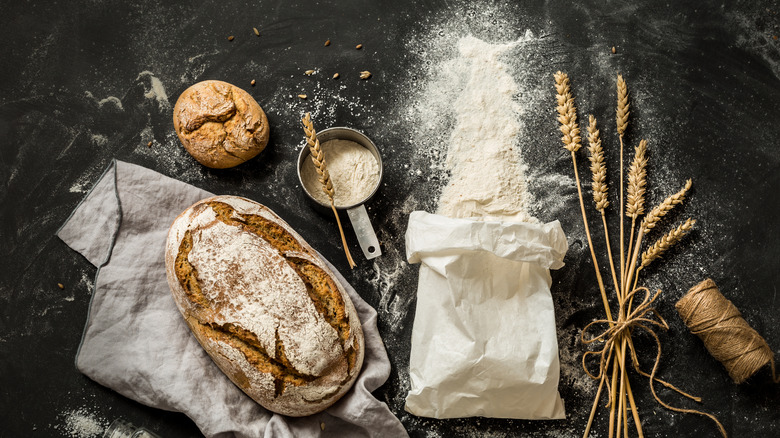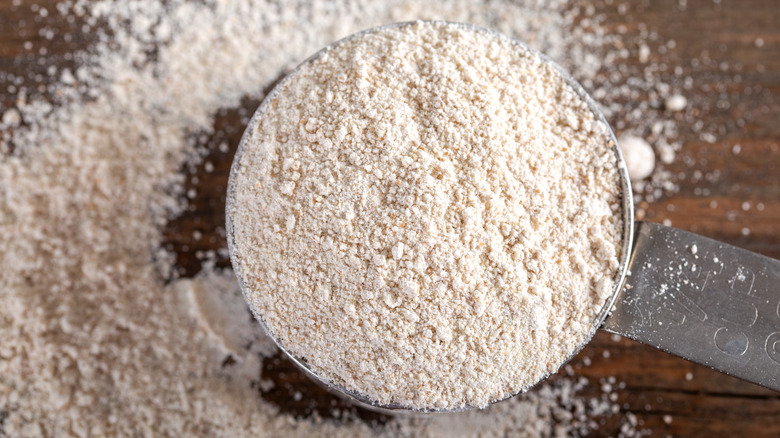Why You Should Always Fluff Your Flour Before Baking
If you're someone who finds solace in baking, you've certainly measured your fair share of flour, which isn't always the most straightforward (or cleanest) task. You also may have a particular way in which you measure flour, or maybe you abide by recipes that ask for a specific technique to be applied when setting up your baking mise en place.
AllRecipes notes that flour can settle and get compacted in its packaging, especially if you haven't used it in some time, so it's important to simply fluff (or aerate) the flour. This allows for more accurate measuring, easier mixing with other ingredients, and no compacted clumps — just aerated flour. The Takeout tells us that a standard cup of flour should always weigh precisely 125g, but because of rushed measuring, inaccurate measuring cups, or sometimes just laziness, this number is rarely ever met. It is also super helpful to scoop and scrape: Fluff the flour with a fork or whisk, use a spoon to scoop flour into the measuring cup until slightly mounded, and then level it off with a butter knife or offset spatula to ensure the most accurate measurement. Obviously, this can only be done properly in individual measuring cups that are the precisely desired measurement that the recipe calls for.
Why should your flour always be aerated?
In addition to the other perks, aerated flour also yields a lighter, fluffier final result, so it's good news all around. Another good thing to keep in mind: Be sure to read the recipe carefully. One cup of flour sifted is different from one cup sifted flour. (It's tricky.) Furthermore, it's also important to keep in mind that different baking projects might require different preparations — think of the difference in texture between sourdough, angel food cake, and yellow cake. Lastly, be mindful of the type of flour you're using. Some gluten-free flours might clump more than cake flour or all-purpose flour.
Please remember: Fluffing/aerating is different from sifting! Don't mix them up — sifting doesn't always need to be done, whereas fluffing and aerating flour is almost always advantageous for any baking project. If you're certain that you need to sift, though, don't fret if you don't have a sifter — just use a fine mesh strainer.

